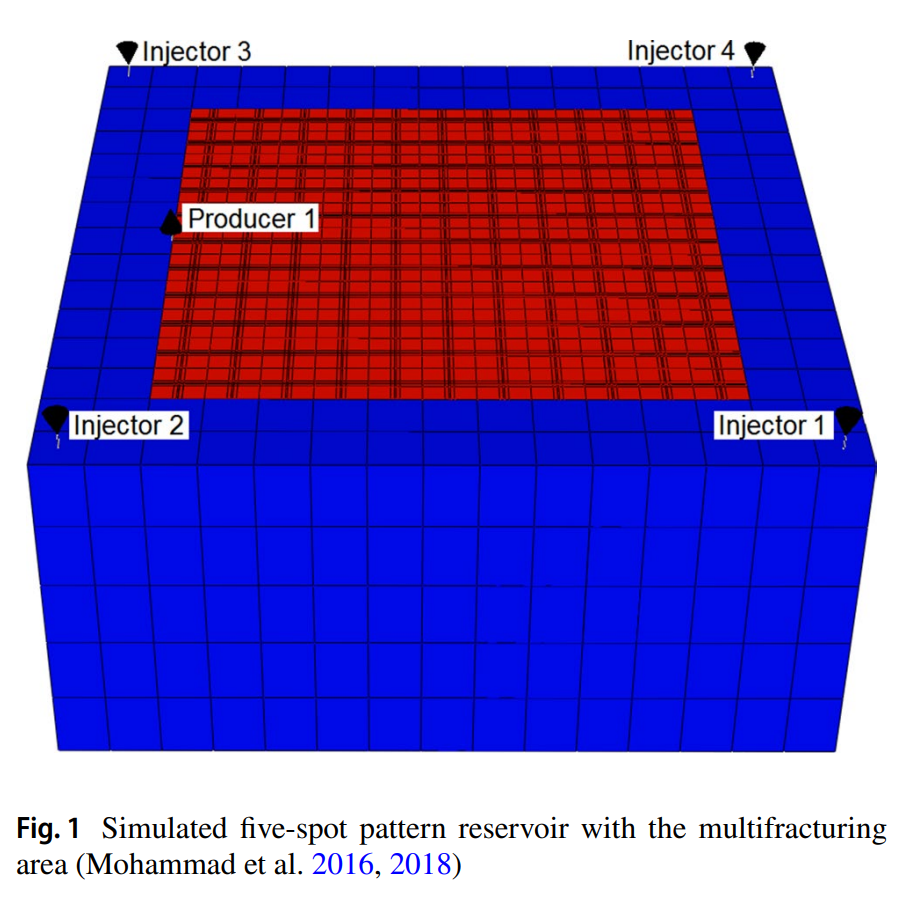CMG软件应用情况
结论
-
采用稳态毛管力预测水驱效果时,毛管压力分布更均匀,毛管阻力较小,油饱和度下降更均匀且更快。
-
用稳态毛管力代替动态毛管力时,储层的井产量被高估,预测的油回收会更早突破,导致更大的水涌入。
-
在水力压裂的非常规致密油储层中,考虑动态毛管力是必要的。本研究为预测水力压裂非常规紧油储层的产量提供了另一种视角。
Simulation study of relative permeability and the dynamic capillarity of waterflooding in tight oil reservoirs
Abstract
Relative permeability (kr ) and the capillary pressure (Pc) are the central key elements defining the multiphase fluids flow behavior in the porous media. However, the dynamic capillarity should consider the dynamic relative permeability and the dynamic capillary pressure while performing waterflooding process in extremely low permeable formations. In order to improve the oil production, the advanced horizontal well drilling along with multiple hydraulic fracturing is generally instigated to penetrate the unconventional resources. The aim of this study is to consider the dynamic capillarity in a commercial reservoir simulation, while utilizing the data gained from the dynamic and steady experiments of the relative permeability and the capillary pressure impacts during waterflooding process in the core plugs of unconventional tight oil reservoirs. The commercial reservoir simulation conducted sensitivity analyses using Computer Modeling Group simulator. The outcomes show that the well production of the reservoir is overestimated while implementing steady data for forecasting due to which the oil saturation decreases more equally and further rapidly. Additionally, the forecast of the well production estimated to breakthrough sooner. However, neglecting the dynamic capillarity causes a huge breakthrough of water influx. Therefore, the core objective of this study is to probe the consequences of taking into consideration the dynamic capillarity in ultralow permeable formations while giving an alternative perspective to forecast the production of the hydraulically fractured unconventional tight oil reservoirs.
Keywords
Dynamic · Steady · Capillary · Relative permeability · Waterflooding



Conclusions
Following are the major conclusions from the numerical simulation conducted by CMG to investigate the role of the dynamic capillarity throughout the waterflooding procedure in hydraulically fractured unconventional tight formations:
1. If the steady capillarity is adopted to predict the waterflooding performance, the capillary pressure distributes more uniformly, and the capillary resistance is smaller, with a more even and quicker reduction in the oil saturation.
2. If the steady capillarity is used to replace the dynamic one, the well production of the formation is overvalued and the predicted oil recovery will breakthrough sooner causing a greater breakthrough of water influx.
3. It is necessary to take into consideration the dynamic capillarity in hydraulically fractured unconventional tight reservoirs. This work gives an alternative standpoint to forecast the production of the hydraulically fractured unconventional tight oil reservoirs.
